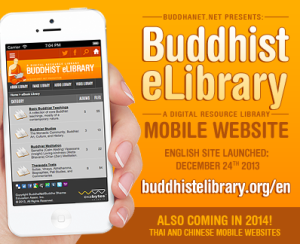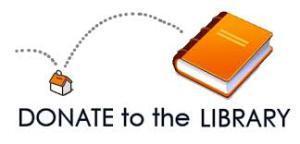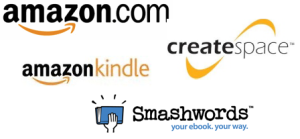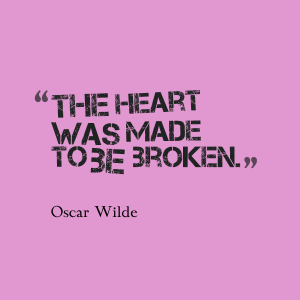Sally Ember's Blog, page 126
February 21, 2014
New Online #Buddhism Library
New Online Library for those interested in Buddhism, in 5 languages (English, Chinese, Thai, Portuguese, and Spanish, and further languages and materials are planned), launched at the end of December, 2013!
Read more, get links: American Buddhist blogspot
Filed under: Blogging and others' content, Buddhism Tagged: Buddhism, Buddhist







February 20, 2014
How I Write a Book Review
All reviewers and potential reviewers: please READ and HEED! thanks.
 Originally posted on Vampires, Crime and Angels...Eclectic Me:
Originally posted on Vampires, Crime and Angels...Eclectic Me:
Writing a book review sounds simple, right? You read a book, then you write about whether you enjoyed it or not and what you did or didn’t enjoy about it.
Not for me.
I have a terrible memory. I can finish a book and not remember what I loved about it or if anything bothered me. So my solution is to take notes. Either on paper or by making notes and highlights on my Kindle. Either way is fine since I can go back to either of them and type up those notes when I’m finished the book. It’s usually in the typing up of the notes, in sequence, that I remember other things I might have liked or disliked about the book.
The note taking is the vital part. Without those notes, I can’t remember anything else. So I start with them and if anything else crops up I add that too. I also have some general key notes that I like to answer for every book. These are things that all readers want to know, and some are just some things that might encourage readers to give the book a try. You’ll probably have noticed them.
Filed under: Writing







Pros and Cons of #Writers’ Critique Groups
Everyone know the biggest drawback to #self-publishing is the isolation. Yes, every #author who doesn’t collaborate in their #writing writes alone. However, prior to the explosion in self-publishing, most books and ebooks that came to readers went through several other sets of eyes and had several editing and revision drafts done by others that helped polish and tighten the writing prior to publication.
Today more than ever before, pieces of writing from short stories, blogs and articles to full-length books, both nonfiction and fiction, are getting all the way to a reader with no other editor than the writer. This is not a great situation for most readers or writers.
Because many writers seek professional companionship and critiques as well as audiences for drafts and new ideas, writers’ groups have sprung up for many centuries, both formal and informal. These groups usually meet regularly. Size can vary from a pair to a large group of a dozen or more.
The activities in the group can include public readings and/or sharing of written material with participants’ immediate oral comments, pages returned with mark-ups and discussions of the shared pieces. Locations can vary and many are not available free, so some groups charge a fee or require members to pay dues to cover costs and perhaps invite a speaker/presenter to conduct a workshop or give a talk on occasion.
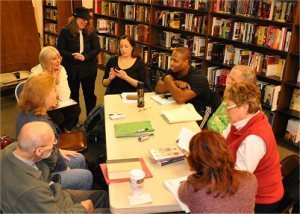
image from http://www.audreypress.com
Writers’ groups often appoint or hire a facilitator to guide and contribute to the critique. In better-run groups, this leader also keeps time and makes sure the comments are constructive and fair.
However, some groups are not well-run. The ground rules are not clear. Time is not equally distributed because it isn’t tracked well. Comments are not always fair and constructive. The facilitator dominates the discussion. Discussions veer away from the writing into personal stories and tangents introduced by participants. Suggestions are made that are not conducive to the writer’s intent, restrictions, topic, genre or format.
The diverse types of knowledge and experience among participants and in a leader of a writers’ group can be rich sources of varied perspectives OR generate too many irrelevant and unhelpful comments.
Pros and Cons of #Writers’ Critique Groups
CONS: An unskilled or distracted facilitator
— allows too many destructive comments to occur and this encourages more of the same
— allows the exposed author to experience immediate hurt feelings or bewilderment
— allows the writers to leave the critique session discouraged and confused by conflicting advice and too many off-topic remarks
— offers too many comments and dominates the discussion, shutting down, arguing with or interrupting other participants.
Writers in poorly-run groups can be led astray, which can causes them to depart from writing in their own voices and to lose sight of their personal or professional writing purposes. Many writers get discouraged or even “blocked” by attending poorly run writers’ groups.
BEWARE! Better to be isolated than to attend a group that operates negatively.
PROS: An skilled or focused facilitator
— leads a well-run group peopled by dedicated, experienced writers as well as “newbies” who each feels comfortable sharing and contributing
— trains and supports members to utilize the time effectively for receiving and offering constructive critiques, with newbies learning from old-timers the most effective methods for delivering and receiving criticism
— can foster an atmosphere of professional support that provides many gems of advice and new points of view for each member, even ones who don’t share in every meeting.
These productive sessions are wonderful catalysts for the writers who share drafts and any who attend. Authors in well-run writers’ groups return from each meeting with new vigor for editing, revising and creating new content.
Tips for Writers’ Groups:
1) Productive critique sessions are NOT riddled with “we loved it,” “it’s great,” and “keep going” with little or nothing else.
Critics must provide reasons for their opinions, especially when they’re positive, so that writers learn what we do well and can replicate our successes.
Critics must also defend their opinions that tell a writer to make changes by offering suggestions for revision or reasons for the ways the writing doesn’t “work” for the reader/listener.
2) Without the prompting of a skilled, focused leader, opinions may be offered with insufficient or no reasons given. Offering positive or negative opinions without rationales is not useful to a writer and should not be allowed.
3) Focus, clear ground rules (e.g., the requirement to give reasons for opinions, taking turns, sharing time equally) and giving both emotional and cognitive responses to a piece of writing are all parts of a productive writers’ group.
4) If YOUR writers’ group is not productive and positive enough, make an effort to change it or leave it. Start your own or join a different group.
5) Networking has never been easier. Meetup.com is a source of in-person writers’ groups. You can also check your local library’s, college’s, county’s/parish’s, state’s/province’s and country’s organizational listings for professional writers’ groups in your geographic area or genre. Check Facebook, LinkedIn, Google, and many writers’ associations and genre-centered groups online and around the world for possible writers’ groups, critique opportunities and other networking options. Some groups are now meeting online and virtually via SKYPE, iCHAT, Google Hangouts, etc.
If you are a writer seeking a group, I hope you find or start a great one!
Best of luck in your writing.
Filed under: Writing Tagged: authors, editing, Sally Ember, self-publishing, Writers, writers' critique groups, writers' groups, writing







February 18, 2014
“#ThisChangesEverything” #BookTrailer with #Multiverse Focus
This Changes Everything, Volume I, The Spanners Series, by Sally Ember, Ed.D., is sci-fi/romance/multiverse/paranormal/utopian speculative fiction for adults/new and young adults available in ebook format via Smashwords, Amazon, iBooks, Kobo, nook, Flipkart, Diesel and other ebook retailers worldwide. Buy links, reviews, author interviews, excerpts and more:
http://www.sallyember.com
Are YOU ready for the changes?
Watch Book Trailer here:
Or, view on and share the youtube link:
http://youtu.be/X_8ZFVY9BMg
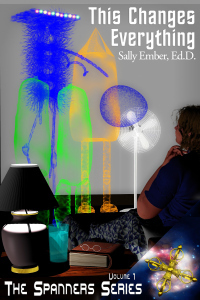
Cover art and logo by Willowraven.
Filed under: The Spanners, Themes from The Spanners, This Changes Everything, Volume I of The Spanners Tagged: aliens, book trailer, ebook, multiverse, Sally Ember, sci-fi, Smashwords, The Spanners Series, This Changes Everything, ThisChangesEverything, WillowRaven







February 17, 2014
How Having a #Buddhist #Spiritual #Teacher Changes Me
Some of you may remember I began an at-home, mini-#retreat to study and practice in the #Tibetan #Vajrayana #Nyingma tradition of preliminary practices for #T’hödgal—the #Rushan exercises—with meditation, contemplation and study, in October, 2013. I planned to end this sequence by Tibetan New Year, Losar, March 2, 2014. I have written a few posts about some of these experiences and my reactions to them (the ones I’m allowed to publicize).
My spiritual teacher’s schedule is very full and it is often difficult to arrange to see him. Luckily, I found out yesterday that I was able to receive an appointment to see him February 26, which means my retreat ends in a week.
Immediately upon having the date and time for our next meeting confirmed (called an “interview” in this tradition), I could feel the familiar internal reactions that signal other responses that will occur over the next week, in anticipation and preparation for our meeting and my receiving the next teachings. Physically, I feel internal tremors, “butterflies,” flutters of fear and excitement in my mid-section and heart. My heart rate speeds up, my breathing gets shallow and I have to remind myself to take deeper breaths.
Mentally, my mind starts racing around to gather up what I might want to ask, tell, find out in our meeting, which is always too short no matter how long it is. I keep a notebook and start writing down my questions and reactions to the practices during my retreat and always moreso in the days right before we meet. The time with my teacher is precious and I want to use every moment well.
Last night, I again have lucid dreams and more dreams that I remember. Lucid dreams are the kind that occur when I, as the dreamer, know I am dreaming during the dream, waking up to some extent while having the dream experiences and notice that I am awake. Remembered dreams are the ones that wake me up completely or that are with me when I first get up in the morning.
Sometimes I remember dreams from the night before at random moments during the day as well. In each of these dreams, lucid or remembered, I’m having some conversation or encounter with my teacher.
In my dreams, we are talking about my experiences in this retreat. Or, I am asking questions and he is teaching on some related subject. Or, we are walking, preparing food, washing vegetables or dishes, cleaning a room together.
I had a dream that we were swimming in the pond at our retreat center together at night. Somehow, we could both go underwater and still breathe, talk, and relate to each other for many minutes without difficulty, all the while the moon shone through the water, lighting us.
I dreamed we were in a hot tub together, naked but unembarrassed, talking about accomplishments and experiences in one type of meditation (often termed experiencing “naked awareness” in English translations).
Many times in the “ramp up” to a scheduled interview, I hear him talking to me in my sleep.His speaking voice wakes me up. He is instructing, explaining, teaching on a relevant topic but not one I have actually heard him talk about before in our actual encounters. Although it wakes me up, I try to go back into the dream to hear the rest of what he’s saying, but that never works. I lie there, recalling what he said and what I understand of it. When I have a pen and paper handy, I write down what I can remember.
Also in the days or weeks preceding a scheduled interview with my teacher, I am more keenly aware of my faults and flaws. I try to remember to bring compassion to my self-critique. I also notice any small progress signs I might have and note them down.

H.E. Chagdud Tulku Rinpoche and his reincarnation
Our teacher (his teacher and, for a while, mine), His Eminence Chagdud Tulku Rinpoche, often told us that there are several sure signs of progress to watch for which he offered in a series of questions to ask ourselves:
“Am I more patient?”
“Am I less angry?”
“Am I more kind?”
“Does compassion arise spontaneously within me?”
“Am I more generous?”
If the answers to any or most of these questions is “Yes,” then we can be assured that our practice is having good effects. If not, we need to adjust/rectify: our practice, our motivation, our commitment, our understanding.
In the Tibetan Buddhist tradition, the spiritual teacher is said to hold the key to one’s heart. Opening the heart (or, in Tibetan terms, the heart/mind) is fundamental to becoming receptive to the spiritual practices and their impact on us, allowing us to change, inviting the methods to work within us without impediment.
A teacher may play many roles. The only limitations to the impact of a qualified teacher are in our own minds.
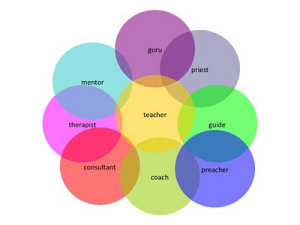
image from http://www.unfetteredmind.org
The story of how I “found” my spiritual teacher is a bit unusual in that I knew him before he became a Lama. However, I hadn’t seen him in ten years, only talked with him twice on the phone, before coming to accept teachings from him in 1999 and decide with him if he could be my teacher. He had told me on the phone that people who knew him “before” had had difficulty accepting him as a teacher and was warning me that it might not work for us, either.
I told him that I had already had many dreams in which he IS my teacher and I was confident it would work. Secretly, though, I was nervous and a bit doubtful, myself. I knew what he meant because the first person I had considered as my teacher was also someone I had known before and things were very difficult for both of us.
The day the retreat started that June day in 1999, we were all gathered in the shrine room (large space for meditation practice and teachings), waiting for him to arrive. I had no idea how the retreat would be structured, what went on, even where he would sit. There were thrones in the front of the room, but I had a hard time imagining that he would actually sit on one. Because Rinpoche then lived in Brazil, Rinpoche’s picture was framed and occupied the highest throne, in the center. There was one on the right side of it that was empty.
There was a curtain, a drapery wall, separating the shrine room from the porch eating area. It rippled and a man entered. At first, I didn’t recognize him as the man I had known. His hair was down past his waist and flowed as he moved. Last time I’d seen him, his hair was barely to his ears.
Even more different was the way he moved. More startling and unexpected was that I felt my heart burst open. My eyes filled with tears. In total silence and surprise, half bowed along with everyone else, I stood there staring at him. There was a glow around him that I could not actually see with my physical eyes but which I could perceive nonetheless. He emanated peace, confidence, warmth.
My heart was pounding and the tears increased as I watched him glide smoothly across the room carrying a single, long-stemmed rose in one hand.
He walked up to the throne with Rinpoche’s framed face on it. Gently and reverently, with immense love that I could feel from across the room, Lama Drimed placed the rose in front of the picture. Then, he gracefully stepped back several paces and did three full-body prostrations in front of that throne, offering respect and devotion to his teacher. I felt his devotion as pinpricks in my heart and my tears flowed.
He finished his prostrations and walked over to the empty throne. Climbing up onto it, I could feel the rightness of it: it was his seat, his rightful place.
As soon as he sat down, the room of about thirty students erupted in motion: everyone began prostrating to him as he had done to Rinpoche’s picture. I stood there, trembling. Up until then, despite having attended several teachings, one retreat and several empowerments with other teachers, including Chagdud Tulku Rinpoche, when I had done prostrations, I hadn’t felt anything. I did them out of respect, but without my heart engaged.
This time, as I bent to the floor to join the others in this ritual, tears fell on the carpet and my heart felt as if it would burst. The English translation for the words to the prayer we say as we do the prostrations echoed in my mind with new meaning:
“From now until I reach the heart of enlightenment, I take refuge in the Lama, who is the Three Jewels.”
Not “the” Lama: THIS Lama. I felt gnosis resonating in me as I prostrated.
My devotion and dedication awakened that afternoon as it had on no other day in this lifetime, yet it felt as if I were coming home. I had found my teacher, my spiritual guide and friend, the key to my heart/mind. Right there, that day.
Now, almost fifteen years later, I am even more devoted, dedicated, grateful and certain of my good fortune to have Lama Padma Drimed Norbu as my teacher. He scares me, he amuses me, he teaches and guides me. We argue, we talk, we laugh, we discuss. Lama Drimed as a Lama represents the embodiment of enlightenment. As a man, puts kale into his juicer and talks to me about my being a new sci-fi author. He makes me cry in gratitude, frustration, discouragement and awe.
I stretch, I learn, I grow. So does he.
In other times and now, in Tibet, India, Burma, Nepal, many Buddhist students have (had) to endure much hardship, danger, long journeys and infrequent opportunities to be with their teachers. Sometimes only once in a lifetime are they physically in the same places; being able to have an interview is even rarer.
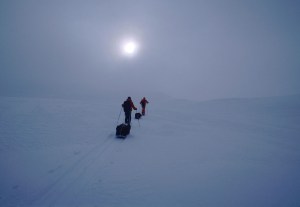
image from http://www.ornotmagazine.com
I am so lucky that he is alive and teaching, willing to have me as a student. The grace, good karma, great coincidence of our living in the same geographic area after many years of living other places allow me to see him next week just by driving my car about ninety minutes on good roads.
May all beings benefit. May all find their spiritual teachers and meet with them in this and every lifetime.
Thank you for being the key to my heart/mind, Lama Drimed. May you have a long, healthy, wonderful life filled with benefit and happiness.
Filed under: Buddhism, Gratitude, Mini retreat reports, Personal stories, Tibetan Vajrayana Nyingma Tagged: Buddhism, Buddhist, meditation, Nyingma, Sally Ember, spiritual teacher, Vajrayana







February 16, 2014
#Female #ebook #Authors: Getting Checked Out More at #Libraries
#Libraries’ Top Circulating Print #Books and #Ebooks in Jan, 2014: How Ebooks are Leveling the #Gender Playing Field
FICTION (PRINT) = 11:4
NONFICTION (PRINT) = 11:4
TOTAL (PRINT) = 22:8, male #authors to female authors (about 3:1)
Female Authors in both print nonfiction and print fiction are outnumbered by male authors almost 3:1. In 2014. This does not bode well for 2014.
How about these figures: Fiction = 15:0. That is the ratio of already published and known authors on the Print Fiction list to unknown/previously unpublished authors.
Fifteen to NONE.
ZERO new authors are among the top circulating Print Fiction in libraries (nationwide, USA) for the first month of 2014. (Link and full list, below, from Library Journal.)
We can’t view a comparable list of ebooks because 1) not all publishers or authors of ebooks provide them to libraries and 2) not all ebooks available are purchased by libraries.
I realize the same could be said for print books, particularly #2, but the vast majority of print books published by major publishers ARE purchased by libraries, whereas there is no such comparable circumstance for the mostly independently published/uploaded ebooks regarding ebooks’ presence in library collections.
Just for thinking purposes, look at what authors’ ebooks are on the “front page” of the lists of 2013′s top circulating e-books that are available to borrow from the Toronto, Ontario, Canada’s public libraries (six or seven, total, on each “page”):
FICTION (EBOOKS) = Kate Atkinson, Sophie Kinsella, Eleanor Cattin, Robert Galbraith and J.K. Rowling, Linwood Barclay, Herman Koch, Dan Brown. 4:3
NONFICTION (EBOOKS) = Kristine Barnett, Kelly Oxford, Shelley Sandberg, Sonali Deraniyagala, Reza Aslan, Michael Moss. 2:4
TOTAL (EBOOKS) = 6:7, males to females.
For all of 2013, the authors who wrote the top 30 ebooks (still in Toronto) are:
Mixed, FICTION and NONFICTION (EBOOKS) = 21:9 = 7:3, males to females
You might think: Oh, that is just in Canada, or just Toronto. All right.
Here are Sacramento, California’s figures for 2013, Top 20 physical (print), which are all Fiction, and Top 20 Virtual (ebooks and audiobooks), which are mixed Fiction and Nonfiction, most-circulated titles.
FICTION (PRINT) = 12:10 (three have joint authors), = 6:5
MIXED FICTION/NONFICTION (EBOOKS & AUDIOBOOKS) = 12:10 (two have joint authors) = 6:5
a TIE!
What about the people in “middle America”? Let’s check Marion County, Indiana, which published a list of its 15 most popular (top circulation) ebooks for 2013.
FICTION (EBOOKS): 8:7, male to female authors.
Almost a tie!
Let’s check the New York (City) Public Library, or NYPL top 10 circulating print books’ authors for 2013.
FICTION (PRINT): 3:7
NONFICTION (PRINT): 6:4
TOTAL (PRINT): 10:11, males to females
I requested the top ebooks from NYPL; waiting for that.
http://www.nypl.org/blog/author/miriam-tuliao
My tentative conclusions are these:
1) ebooks are “leveling” the playing field for female authors since, for the first time in publishing history, authors do not have to wait for the largesse or permission from publishers to get our books into the hands of readers, and traditional publishing has always favored males (to date).
2) once more ebooks are available in libraries (still to come), even more ebooks authored by women will be in the hands of readers.
3) since public library patrons are skewed, economically, to the less affluent among us, ebooks and particularly female authored ebooks may not get into everyone’s hands until ebook tech (ereaders) will be borrowable.
4) Because of Indy publications for both print and ebook formats, more female authors are getting published and therefore getting purchased by libraries and into the hands of readers.
5) Don’t have exact numbers, but general stats show that there are more females than males borrowing both print and ebooks from USA libraries. If I had to make an educated guess, I’d say the ratio of readers in the entire USA, using libraries or not, is about 1:2 or 1:3, males to females.
PREDICTION:
More female than male authors are going to be on best-seller and top circulating lists of both print and ebooks in future months and years.
Meanwhile, please donate money, give your used print books and sponsor the purchase of ebooks for your local public libraries so that ALL authors’ work becomes available to more readers! Thanks!
FICTION
RANK
1 Sycamore Row. John Grisham.
2 The Goldfinch. Donna Tartt.
3 Never Go Back. Lee Child.
4 Gone. James Patterson & Michael Ledwidge.
5 Identical. Scott Turow.
6 Takedown Twenty. Janet Evanovich.
7 Doctor Sleep. Stephen King.
8 W Is for Wasted. Sue Grafton.
9 The Longest Ride. Nicholas Sparks.
10 Storm Front. John Sandford.
11 And the Mountains Echoed. Khaled Hosseini.
12 Doing Hard Time. Stuart Woods.
13 The Cuckoo’s Calling. Robert Galbraith.
14 The Valley of Amazement. Amy Tan.
15 The Gods of Guilt. Michael Connelly.
NONFICTION
RANK
1 David and Goliath: Underdogs, Misfits, and the Art of Battling Giants. Malcolm Gladwell.
2 Killing Jesus: A History. Bill O’Reilly & Martin Dugard.
3 I Am Malala: The Girl Who Stood Up for Education and Was Shot by the Taliban. Malala Yousafzai & Christina Lamb.
4 Zealot: The Life and Times of Jesus of Nazareth. Reza Aslan.
5 Still Foolin’ ’Em: Where I’ve Been, Where I’m Going, and Where the Hell Are My Keys? Billy Crystal.
6 Johnny Carson. Henry Bushkin.
7 Orange Is the New Black: My Year in a Women’s Prison. Piper Kerman.
8 The Reason I Jump: The Inner Voice of a Thirteen-Year-Old Boy with Autism. Naoki Higashida.
9 The Bully Pulpit: Theodore Roosevelt, William Howard Taft, and the Golden Age of Journalism. Doris Kearns Goodwin.
10 Things That Matter: Three Decades of Passions, Pastimes, and Politics. Charles Krauthammer.
11 One Summer: America, 1927. Bill Bryson.
12 Lean In: Women, Work, and the Will To Lead. Sheryl Sandberg.
13 My Story. Elizabeth Smart & Chris Stewart.
14 Grain Brain: The Surprising Truth About Wheat, Carbs, and Sugar—Your Brain’s Silent Killers. David Perlmutter & Kristin Loberg.
15 This Town: Two Parties and a Funeral—Plus, Plenty of Valet Parking!—in America’s Gilded Capital. Mark Leibovich.
Filed under: Statistics, Writing Tagged: authors, ebooks, gender, libraries, library, Writers







February 15, 2014
“A Page for a Purpose”: #Children’s #Books’ #Illustrations Collaboration for #Charity
“A Page for a Purpose”: #Children’s Books’ #Illustrations Collaboration for #Charity
Larry McGraw, children’s book author, has a new project going. #Illustrators for children’s books, pay attention; others, please share!
from Larry McGraw: “I propose something new. Instead of asking people to illustrate a whole book, I’m going to ask for one page. I’m going to call this endeavor ‘A Page for a Purpose’ (mainly because ‘Coloring for a Cause’ was already taken) and ANYONE can be a part of it.
“If you are interested or you know someone who might be interested just let me know. Artistic talent is not 100% necessary but it would be nice if you could at least draw a decent stick figure (Hence why I WRITE the books).
Here are the full project explanation and website link:
http://lcmcgraw.weebly.com/1/post/2014/01/a-page-for-a-purpose.html
Here is Larry’s website link:
http://lcmcgraw.weebly.com/
First posted by Larry on January 9, 2014. I don’t know the project’s end date. Contact Larry for details. Contact: [email protected]
Larry also has a Facebook posting/page:
https://www.facebook.com/lcmcgraw5/posts/574719442615955
Filed under: Blogging and others' content, Indie or Self-Publishing, Support for Good Causes Tagged: Charity, Children, Children's Books, Illustration







#Smashwords vs. #Amazon for #Indie #Authors #ebook #epub: Pros and Cons
Roger Gerald Scott, co-founder of the “Authors Helping Authors” site, posted an article detailing his views on the pros and cons of Smashwords vs. Amazon for Indie Authors considering ebook publishing. I left the following lengthy comment with my differing views, below. First, I link to his article, then post my comments here. Let me know what you think!
I have two corrections to the above article, which is very helpful and factual, otherwise. As an author who has published her ebook for the first time on first Smashwords and then, immediately on Amazon, I am uniquely qualified to speak to the “differences” and “similarities.”
I prefer to start with Smashwords and then upload to Amazon. Here are my corrections/clarifications to Roger’s article and the reasons for my preference, below.
1) First correction/clarification: Kindle Direct Publishing (KDP) is not the same as Kindle Select on Amazon. The first is their regular, free, UNRESTRICTED upload available to any author, any time, regardless of wherever else this ebook appears/is distributed. There is no problem having my ebook distributed on and via Smashwords AND available on Amazon via KDP, which is the route I chose.
Kindle Select, on the other hand, DOES have the restricted distribution rules listed in the above article (which is the main reason I did not use it).
2) Second correction: I did all my own formatting. While it was tedious, it was NOT difficult. I literally went through the Smashwords guide page by page and did it all myself. My ebook (which is sci-fi, 323 pages or thereabouts) went through the Smashwords “meatgrinder” with no problems, first time through. I don’t know why so many people have trouble; they must not follow the directions.
If an author really can’t follow directions (which begs the question how this person can be an author), there are people Smashwords keeps a list of and provides the list to anyone who asks for it who will format your ebook for you.
***HOWEVER, some of the formatters advertising who are NOT on Smashwords’ approved list are NOT worth hiring. Buyer beware. Many scams.
And, none of the formatters is an editor/proofreader. Still have to do that/get that done separately.
3) Furthermore, since Smashwords’ formatting requirements are the most stringent, once my ebook was ready for SW, it is was easily uploaded to Amazon and went through without issue.
Further benefits to using Smashwords:
a) Smashwords provides every format free to the author after the ebook is accepted. I downloaded them all and can send them out via email any time I want. During my pre-order period, this is the way my ebook got to reviewers. All formats means including Kindle’s .mobi, so I had Kindle versions before I uploaded to Amazon.
b) Once I had all the formats provided by Smashwords, I am able to provide coupons at any discount I want, up to and including free, to any individuals I choose, any time, for a period I can select in advance and then also change. I can have more than one coupon active at the same time.
c) This means my pricing is steady across all formats and distribution sites, which forces Amazon to keep my pricing at the price I chose, but that I can provide my ebook free or at a discount any time to anyone via Smashwords and Amazon is none the wiser. The stated price is still the same as on Amazon and elsewhere.
d) Smashwords, like Amazon, provides many author features including one place for reviews, an author page, and “extras.” Nook, Kobo, iBooks and other sites do not have these options. Once I had materials for one site it was easy to upload them to the other, although, for some weird reason, Amazon uses a third party site, Shelfari, for uploading most of the extras.
e) Mark Coker, the owner/founder of Smashwords, provides many FREE webinars, data, fora and help via his staff and himself, that are critically important and useful, especially to new authors of ebooks and new indie authors of any format. I highly recommend that every author view all of these webinars prior to publishing (at least 5 months prior is best) so you can market your ebooks well and use all features available.
f) Smashwords provides a URL with the author’s name in it AT NO CHARGE rather than Amazon’s silly numbering system.
I dislike both Amazon’s and Smashwords’ renumbering the books for the book pages’ URLs; it’s cumbersome to have 2 ID numbers for the same book and completely unnecessary.
Overall, I recommend doing ebook publishing first via Smashwords so that the author can have a pre-order period and build up sales (which all “count” on release day, helping boost rankings) and then on or after release on Smashwords, publish via Amazon KDP (not Kindle Select). This covers ALL the bases very well for indie authors.
I hope this helps everyone. Best to you all. Links below.
Sally Ember, Ed.D., with author pages on:
Amazon: http://www.amazon.com/-/e/B00HEV2UEW
Shelfari: http://www.shelfari.com/authors/a1002726320/Sally-Ember-Ed-D-/books
Smashwords: https://www.smashwords.com/profile/view/SallyEmber
and book pages:
Smashwords: https://www.smashwords.com/books/view/376197
Amazon: http://www.amazon.com/dp/B00HFELTG8 (USA only)
and http://www.amazon.com/dp/B00HFELTG8?tag=viewbookat0e-20 (for all countries)
Nook: http://www.barnesandnoble.com/w/this-changes-everything-sally-ember-edd/1117444256?ean=2940045417921
Kobo: http://store.kobobooks.com/en-US/ebook/this-changes-everything-3
iBooks: https://itunes.apple.com/us/book/this-changes-everything/id746840776?mt=11&ls=1
Also on Diesel, Flipkart, Oyster and several others via Smashwords agreements.
My website: http://www.sallyember.com Visit! Welcome! Comment!
Filed under: Blogging and others' content, Indie or Self-Publishing Tagged: Amazon, ebook, self-publishing, Smashwords







February 14, 2014
Because of Hormesis: When Heartache Doesn’t Wreck You, It Makes You Stronger
Hormesis occurs when a bit of a harmful substance or a life or physical stressor comes into our experience/body in just the right dose or the right intensity. This exposure stimulates our body or spirit to fight back, to get stronger, better, healthier and, therefore, better prepared for any future stronger/larger doses.
Also posted on: http://connectandpost.wordpress.com/2014/02/
How do We Find Our Level?
Most people understand this concept if we exercise with weights, because hormesis explains the benefit of doing the right number of reps (repetitions) with each machine or free weight. Athletic coaches and trainers urge us on, but only to the point of increasing returns. As soon as we get to accruing diminishing returns, we are to stop. How much fatigue, weakness, pain, burning, failure are “too much”?
This is exactly what we need to learn about ourselves in order to avoid hurting ourselves during a workout (or relationship). Water flows downhill; without a hill, it’s stagnant. With rolling hills, meaning, many different experiences, we/water finds its level at every resting place.
Feast or Famine?
Hormesis also governs the benefits of fasting or reductions in calories. Again, only to the point of increasing returns: relieving our digestion for a period of time, cleaning out our systems, creating a new “set point” for our metabolism and weight are all beneficial, but must occur through some stress on our body by reducing our intake of food.
It’s all right to be isolated (or hungry) for a specified time; the deprivation we experience increases our self-reliance, our independence, our ability to tune in and understand ourselves. We can actually feel pain (enormous pain, sometimes) and still be in the benefit “zone,” but if we continue to be damaged for too long, we risk incurring long-term, even irreparable harm (muscle deterioration, mental fuzziness, weakness, anemia, distorted self-esteem, inappropriate detachment, odd cravings, bizarre relationship choices, etc.).
How do We Know When to Jump Out of the Pot?
Most importantly for our understand of ourselves, hormesis shows us that we are not wrong to overcompensate for challenges because that stretching and pushing ourselves beyond our “comfort zone” help us get tougher, smarter, stronger, more confident, more capable for the next encounter with that circumstance. However, if we continually seek or exist in toxic situations, we risk grave harm, even death.
The worst is a situation, an “exposure” to a “toxin” that is gradually getting higher. This is quite dangerous and terrible. Like the frog put into cold water in a pot whose water is slowly heated to boiling, we, too, won’t jump out or even realize we should remove ourselves from the exposure until it’s too late: we get cooked.
We have to know when to exert the effort, when to jump, to jump while we still can. Are you a “glutton for punishment” or an appropriate risk-taker?
What Risks are “Worth” the Experience?
How much hormesis stimulation (how large a toxic dose) is just right and how much is too much? The key here is that hormesis is a favorable response to low exposures of some toxin or stressor. We are not set up to manage moderate or high exposures, especially over prolonged periods of time, without being damaged. With low doses of the potentially harmful substance, most can get stronger; with high doses, almost all die.
A few bad experiences or relationships are manageable. We learn, we grow, we get stronger from these. However, frequently or chronically occurring destructive circumstances ruin us. We do not have unlimited capacities: we do contract an illness, like cancer; we do get depressed, sometimes to the point of suicide; we do become unable to cope.
How do We know When It’s Too Much?
Here is the test. If our response to an “attack” is to become weaker or paralyzed (physically or metaphorically), hormesis is not in effect: we are just being knocked out. When we become exposed again, we will probably not survive intact.
If, when we are physically or emotionally stimulated by low doses of some toxic substance (or person), we develop greater immunity to future exposures, hormesis is working just fine.
How is YOUR heart doing?
Filed under: Blogging and others' content, Life lessons Tagged: Heartbreak, Hormesis, love, risk, strength, stress







February 13, 2014
Most #self-pub #ebook #authors are earning more $ on fewer books and earnings discrepancy will grow greater over time
Most #self-pub #ebook #authors are earning more $ on fewer books and earnings discrepancy will grow greater over time, favoring the #indie authors! Full explanation and more data in article linked, below.
A few more excerpts, paraphrased for Twitter, just to whet your appetite!
86% of top 2,500 genre fiction bestsellers + 92% of Top-100 best-selling books in overall Amazon store are e-books!
Indie authors outnumber trad pub authors in every earnings bracket but one. Even extreme outliers do better w/self-pub.
Self-pub authors make 50% more profit than trad pub, even though indie books represent only half of the gross sales revenue.
“Our data suggests that even stellar manuscripts are better off self-published.”
“When given a choice, readers will buy books other than those vetted by [the New York Times]. The Kindle bestseller lists prove this.”
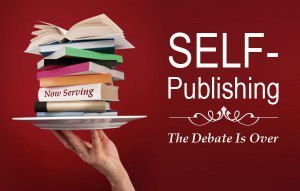
image from http://www.wow-womenonwriting.com
Advice self-pub author, Hugh Howey (article author), gave publishers three years ago, when the Big 5 were still the Big 6. Did they follow it? What do YOU think? (From the same article):
“Publishers should stop trying to convince themselves and others that they’re relevant, and start actually being relevant. Here’s how:
1. Offer much better royalties to authors.
2. Release titles faster. It can take 18 months after a book is turned in to be published. I can do it myself in a week.
3. Use up-to-date accounting methods that are trackable by the author, and pay royalties monthly.
4. Lower ebook prices.
5. Stop futilely fighting piracy. Hint: all such fighting is futile. Piracy can only be made redundant with cost and convenience.
6. Start marketing effectively. Ads and catalog copy aren’t enough. Neither is your imprint’s Twitter feed. Especially if your author has more Twitter followers than you do.”
Link to article I’m referencing, here:
http://jakonrath.blogspot.co.uk/2014/02/me-hugh-howey-and-legacy-john-on.html
Are you an author (either or both trad and indie/self-pub)? DO THIS!
“The authorearnings.com website is now up and running again. Even if you’ve read the info here, I encourage everyone to visit http://authorearnings.com and take the Author Survey and sign the Petition.”
Thanks, Joe Konrath and Hugh Howey!
If you’d just like to read Hugh’s report without the Q & A and conversation with Joe (less entertaining, but shorter), here is the link:
http://authorearnings.com/the-report/
Filed under: Blogging and others' content, Indie or Self-Publishing, Writing Tagged: ebook, indie authors, self-publishing, Writers








